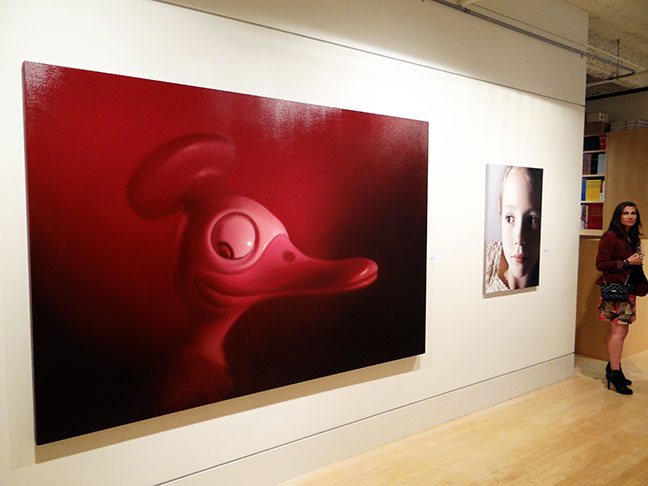Beware of Fraudulent Estate Sales
Q: I went to an estate sale at the home of a prominent local citizen where I bought a Chiparus bronze, a couple of Miro bronzes, and several oriental carpets, all for about $15,000. The estate had a large amount of art including many pictures, lots of oriental rugs, and about thirty bronzes by Remington, Erte, Miro, and Chiparus. I started researching the bronze by Chiparus and found out that he's a very famous artist. Can you tell me what it's worth? I have a feeling I made a fantastic buy.
A: The good news is that you paid reasonable retail prices for everything you bought and weren't overcharged. The not-so-good news is that your buys were nowhere near bargains. The bad news is that the sculptures are recasts of originals (reproductions) probably produced within the past ten years, the rugs are all very recent copies of old designs, and the punchline? It's highly likely that none of these pieces belonged to the so-called "estate" where they were sold.
You're right about Chiparus being a famous French sculptor who was active during the early part of last century, but since your sculpture is a reproduction-- a recast and not an original-- it has only decorative value and minimal resale value on secondary markets. Recasts like this and your Miro bronzes-- also recasts-- are relatively common in the marketplace, cheap to produce, occasionally subject to high mark-ups by dealers selling them, usually made in large amounts by commercial contract foundries in countries like Mexico and China, and are often sold either online or at the types of art galleries and collectibles stores found in high-traffic tourist areas. The same goes for your rugs. They're low-end, recently made, common, inexpensive to produce, heavily marked up by dealers, primarily decorative, and not worth much on the resale market.
A crime may well have been committed here in which case you would be a victim. You thought you were buying old original art and rugs from a private party's estate, but chances are very good that you weren't. What most likely happened is the items did not come from a prominent individual's personal collection, but were instead trucked in from outside sources by the company conducting the sale. The sale was advertised like an estate sale when in fact it was a way for unscrupulous sellers to make new merchandise seem like antiques from a private collection housed in stately mansion.
Steve Proffitt, attorney, auction expert, and "Auction Time" columnist for AntiqueWeek calls this practice "house-packing" and it's against the law. When items in an estate sale are advertised as being part of that estate, but really aren't, that constitutes fraud, false advertising and misrepresentation on the part of the sellers. Buyers are tricked into believing they're buying certain types of merchandise when what they're really buying is totally different.
The main reason disreputable sellers occasionally engage in house-packing and conduct fake estate sales is they know that people normally go to these events looking for bargains. Unsuspecting sale goers believe they're getting bargains (often helped along by the sellers) and are buying at wholesale or dealer prices. You would probably never go into a gallery and pay the exact same prices you paid at this estate sale because you believe that galleries sell at retail and estates sell at wholesale. But that's exactly what you did-- you paid retail gallery prices at a bogus "private" sale.
By applying a little logic to situations like this, you can determine the nature of any collection that's being offered at an estate sale, and avoid getting taken. In this case for example, a sculpture collection consisting of Remington, Miro, Erte and Chiparus bronzes is not very believable. Bronze collectors usually collect pieces by specific sculptors, works from specific time periods or geographical locations, or pieces with similar subject matters. Subject matters and artists as divergent as abstract Miros, Art Deco Chiparus's and Ertes, and American West Remingtons are rarely found in the same collection. Furthermore, walls packed with art, multiple sculptures in every room, and oriental rugs covering every floor are also rarely found in single estates. Other tip-offs to house-packing are multiple duplicate pieces of furniture or household goods, such as several dining room tables, dozens of lamps, or 20 sets of salt and pepper shakers.
Anytime you're in an estate where the items for sale don't look like what you'd find in a typical home, be suspicious. Ask sellers a few simple questions in order to separate out the real sales from the bogus ones. Whenever a sale is billed as unique or special in some way, ask for the name of the collector. Ask why the collector is selling. Ask which items are genuine antiques. Also ask for previously published printed or online information about the history of the collection or the collector. Ask whether all items in the estate belonged to the people who owned the house. If you have any doubts about what sellers tell you or you can't get straight answers to your questions, do your shopping elsewhere.

(Gottfried Helnwein art)

Current Features
- How to Buy Art on Instagram and Facebook
More and more people are buying more and more art online all the time, not only from artist websites or online stores, but perhaps even more so, on social media ... - Collect Art Like a Pro
In order to collect art intelligently, you have to master two basic skills. The first is being able to... - San Francisco Art Galleries >>


